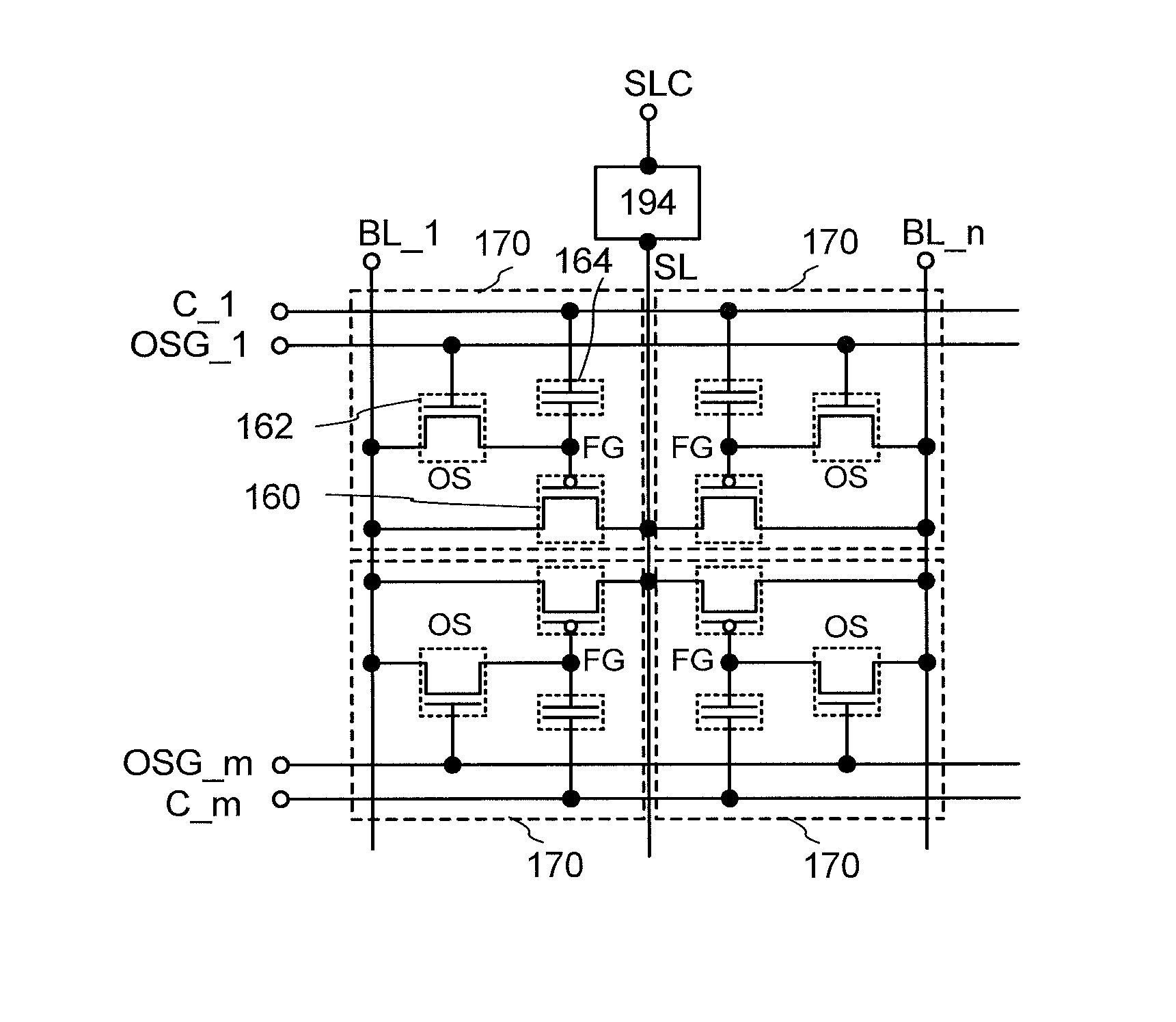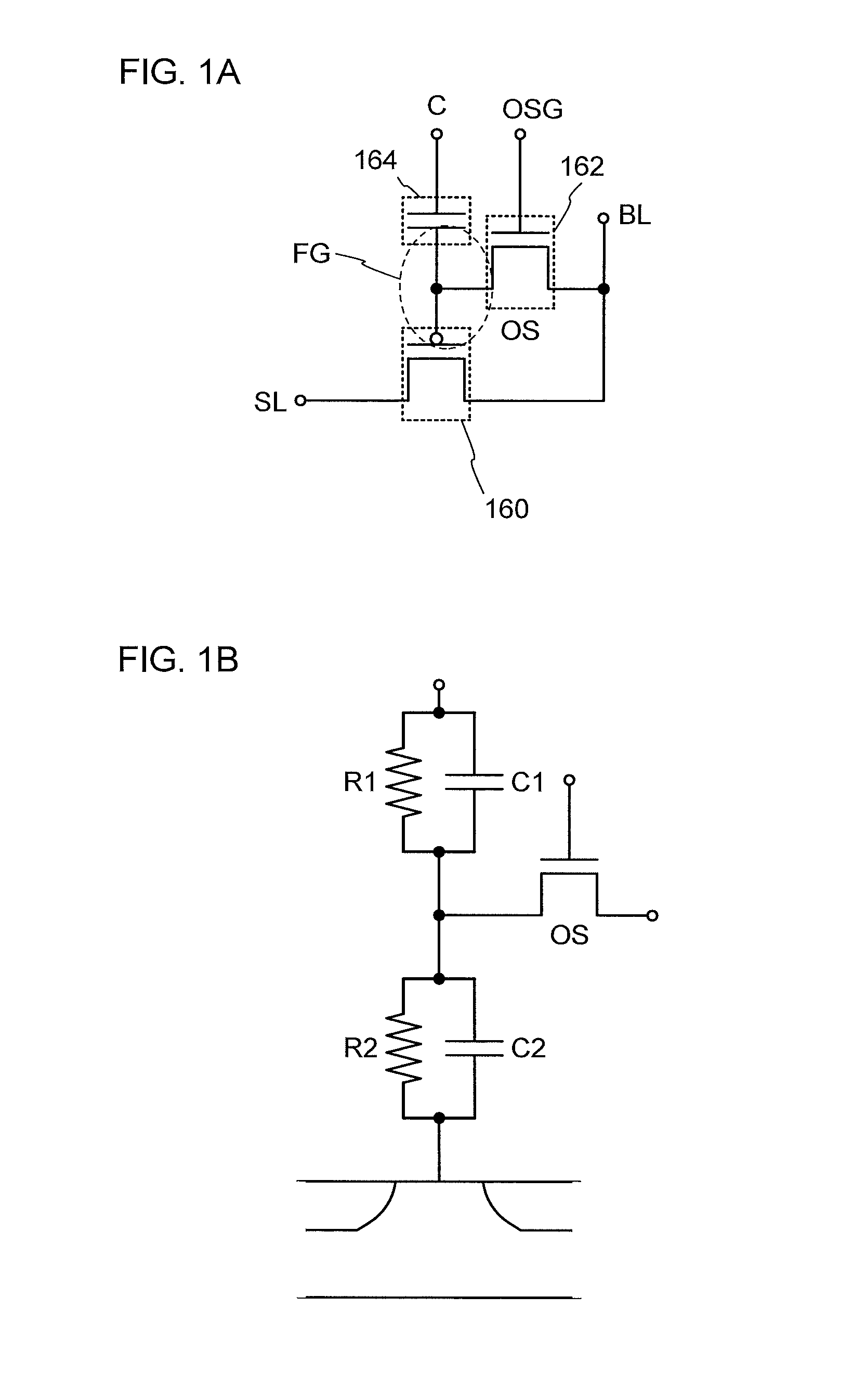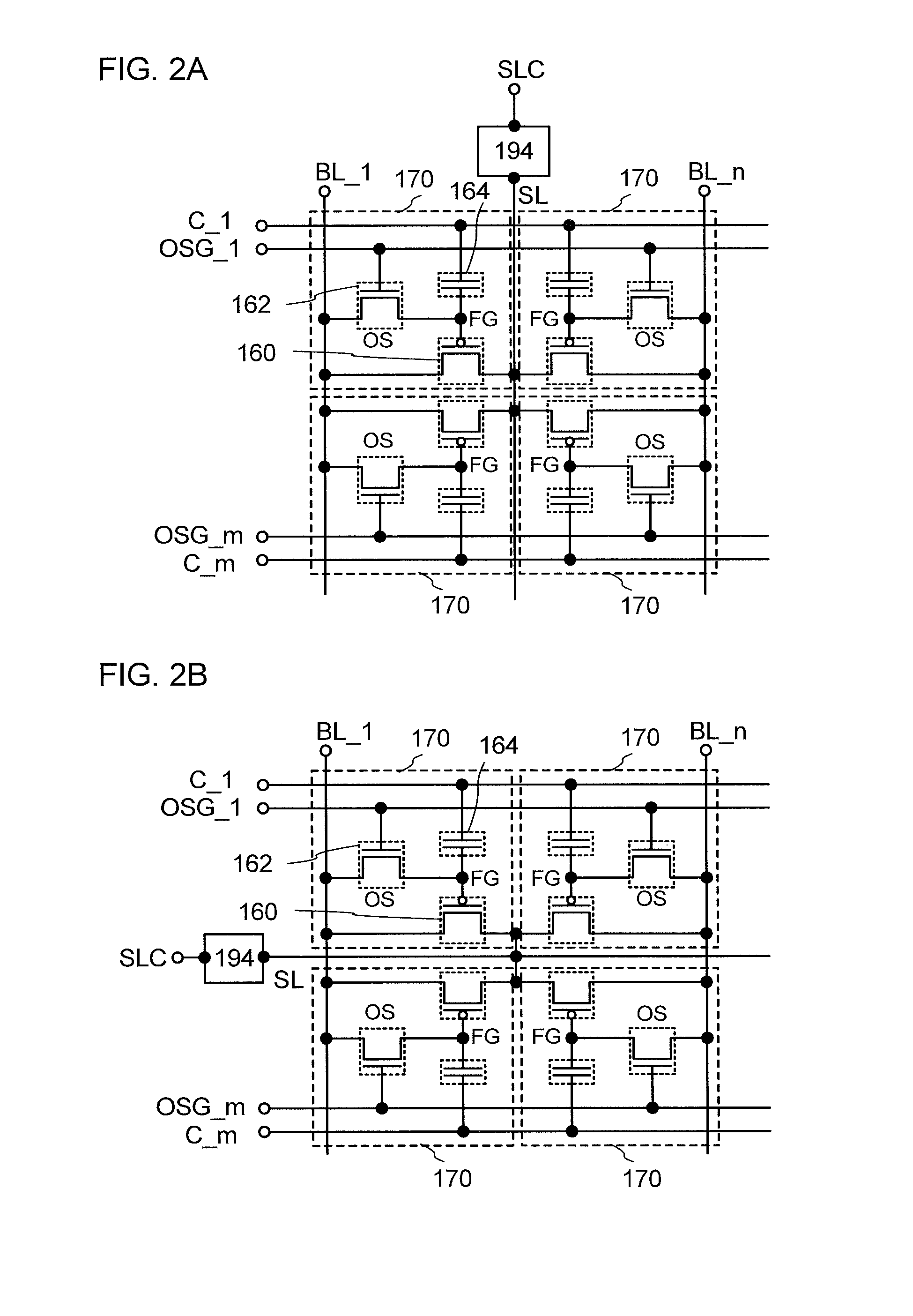Driving method of semiconductor device
a driving method and semiconductor technology, applied in static storage, digital storage, instruments, etc., can solve the problems of short data holding period, difficult to sufficiently reduce power consumption, and loss of stored data, so as to achieve the effect of reducing power consumption, storing data for an extremely long time, and avoiding data loss
- Summary
- Abstract
- Description
- Claims
- Application Information
AI Technical Summary
Benefits of technology
Problems solved by technology
Method used
Image
Examples
embodiment 1
[0051]In this embodiment, a basic circuit structure and an operation of a semiconductor device according to an embodiment of the disclosed invention will be described with reference to FIGS. 1A and 1B and FIGS. 2A and 2B. Note that in each of circuit diagrams, in some cases, “OS” is written beside a transistor in order to indicate that the transistor includes an oxide semiconductor.
1>
[0052]First, the most basic circuit structure and its operation are described with reference to FIGS. 1A and 1B. In a semiconductor device illustrated in FIG. 1A, a bit line BL, a source electrode (or a drain electrode) of a transistor 160, and a source electrode (or a drain electrode) of a transistor 162 are electrically connected to each other; and a source line SL and the drain electrode (or the source electrode) of the transistor 160 are electrically connected to each other. In addition, a write word line OSG and a gate electrode of the transistor 162 are electrically connected to each other. A gate...
application example 1
[0113]Next, a more specific circuit structure to which the circuit illustrated in FIGS. 1A and 1B is applied will be described with reference to FIG. 4 and FIGS. 5A to 5D. Note that the case where an n-channel transistor is used as the writing transistor (the transistor 162) and a p-channel transistor is used as the reading transistor (the transistor 160) will be described below as an example. Note that in the circuit diagram illustrated in FIG. 4, wirings with slashes are wirings each including a plurality of signal lines.
[0114]FIG. 4 is an example of a circuit diagram of a semiconductor device including (m×n) memory cells 170. The structure of the memory cells 170 in FIG. 4 is similar to that in FIG. 1A.
[0115]The semiconductor device illustrated in FIG. 4 includes m (m is an integer of greater than or equal to 2) write word lines OSG; m write-read word lines C, n (n is an integer of greater than or equal to 2) bit lines BL, a source line SL, a memory cell array having the memory c...
embodiment 2
[0129]In this embodiment, a structure and a manufacturing method of a semiconductor device according to an embodiment of the disclosed invention will be described with reference to FIGS. 6A and 6B, FIGS. 7A to 7G, FIGS. 8A to 8E, FIGS. 9A to 9D, FIGS. 10A to 10D, and FIGS. 11A to 11C.
[0130]FIGS. 6A and 6B illustrate one example of a structure of the semiconductor device. FIG. 6A is a cross-sectional view of the semiconductor device, and FIG. 6B is a plan view of the semiconductor device. Here, FIG. 6A corresponds to a cross-section taken along line A1-A2 and line B1-B2 of FIG. 6B. The semiconductor device illustrated in FIGS. 6A and 6B includes a transistor 160 including a first semiconductor material in a lower portion, and a transistor 162 including a second semiconductor material in an upper portion. Here, the first semiconductor material is preferably different from the second semiconductor material. For example, a semiconductor material other than an oxide semiconductor can be ...
PUM
 Login to View More
Login to View More Abstract
Description
Claims
Application Information
 Login to View More
Login to View More - R&D
- Intellectual Property
- Life Sciences
- Materials
- Tech Scout
- Unparalleled Data Quality
- Higher Quality Content
- 60% Fewer Hallucinations
Browse by: Latest US Patents, China's latest patents, Technical Efficacy Thesaurus, Application Domain, Technology Topic, Popular Technical Reports.
© 2025 PatSnap. All rights reserved.Legal|Privacy policy|Modern Slavery Act Transparency Statement|Sitemap|About US| Contact US: help@patsnap.com



